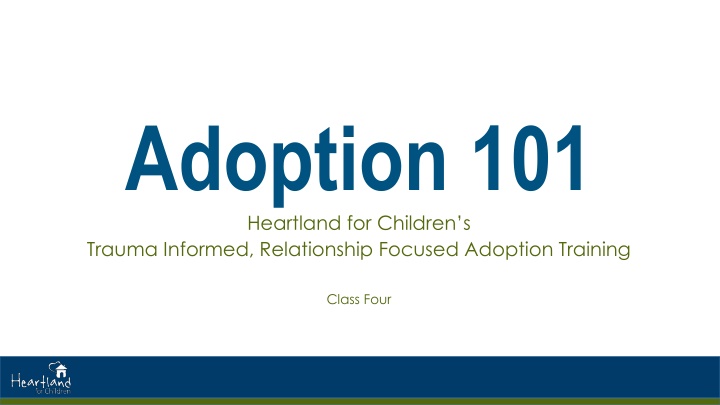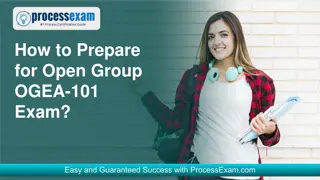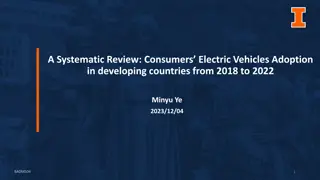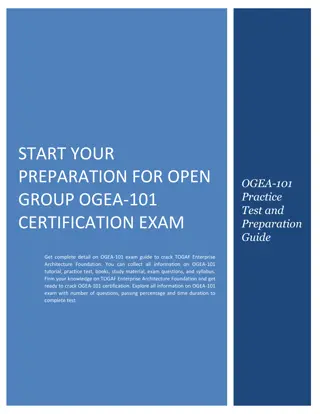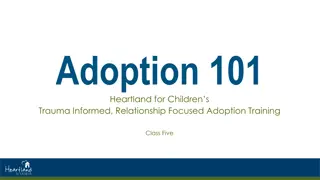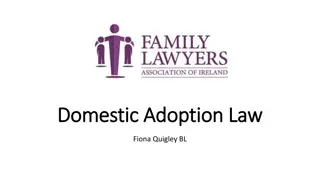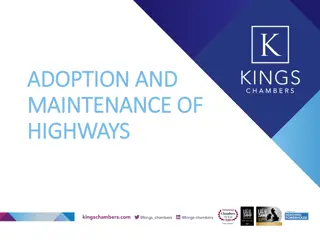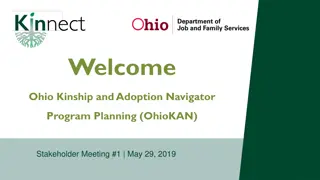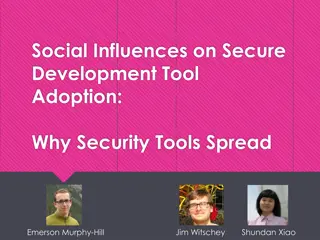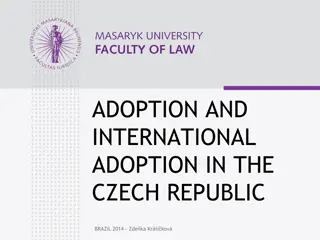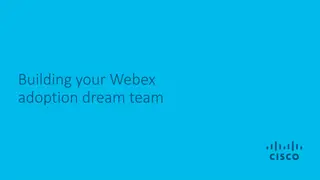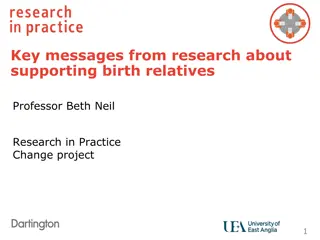Adoption 101
In this session of Adoption 101, we delve into topics of sexual safety for adoptive children, understanding sexual abuse, stages of sexual development in preschool and school-age children, and parenting strategies for sexually reactive children with developmental trauma. The class emphasizes the importance of recognizing normal and concerning behaviors in children, providing support and guidance to navigate these complex issues, and fostering healing and understanding in the adoption journey.
Download Presentation

Please find below an Image/Link to download the presentation.
The content on the website is provided AS IS for your information and personal use only. It may not be sold, licensed, or shared on other websites without obtaining consent from the author.If you encounter any issues during the download, it is possible that the publisher has removed the file from their server.
You are allowed to download the files provided on this website for personal or commercial use, subject to the condition that they are used lawfully. All files are the property of their respective owners.
The content on the website is provided AS IS for your information and personal use only. It may not be sold, licensed, or shared on other websites without obtaining consent from the author.
E N D
Presentation Transcript
Adoption 101 Heartland for Children s Trauma Informed, Relationship Focused Adoption Training Class Four
Welcome! Any questions regarding last weeks material or homework? How is everyone feeling about what you learned? Today we are going to be discussing Sexual Safety, Post Adoption services, as well as the benefits to Adoption.
Lets discuss sexual safety Did you know that approximately 84% of our children in care have experienced sexual abuse? What do we mean by Sexual Abuse? It is important to be knowledgeable of the normal stages of sexual development and common vs. uncommon sexual behaviors and acts. There is a wide variety of sexualized behaviors that are a normal part of development and childhood. Many times it is not the sexual behaviors that are harmful, but the worry and anxiety it causes both parents and children. As parents, we often tend to over-react and over-interpret. Sexualized behaviors can sometimes be a symptom of other things going on in the child s life (e.g. excessive emotional stress) No one is beyond the hope of healing
Parenting the sexually reactive child Common reasons why children with developmental trauma are sexually reactive or abusive: Exposure Experiential (impacts beliefs and emotional associations and view of self) Deficits, such as severe neglect (seeking stimulation and self soothing) If the child feels shame, they will not feel safe. Respond in a very similar way you would to other challenging behavioral needs. Remain calm and try to remember the why. Lets look at some of the stages of sexual development..
Stages of sexual Development Preschool (0 to 5 years) Common acts of sexual development Sexual language relating to differences in body parts, bathroom talk, pregnancy, and birth. Self-fondling at home and in public. Showing and looking at private body parts. Uncommon, Red Flag indicators of possible sexual abuse: Discussion of sexual acts. Sexual contact experiences with other children. Masturbation unresponsive to redirection or limits. Inserting objects in genital openings.
Stages of sexual development School Age (6 to 12 years) Common: Questions about menstruation, pregnancy, sexual behavior. Experimenting with same-age children, including kissing, fondling, exhibitionism, and role-playing. Masturbation at home or other private places. Uncommon: Discussion of explicit sexual acts. Asking adults or peers to participate in explicit sexual acts.
Stages of sexual development Adolescence (13 to 16 years) Common: Questions about decision-making, social relationships, and sexual customs. Masturbation in private. Experimenting between adolescents of the same age, including open-mouth kissing, fondling, and body rubbing. Voyeuristic behaviors. Sexual intercourse occurs in approximately one-third of this age group. Oral sex has been found to occur in 50 percent of teens ages 15 and older. Uncommon: Sexual interest in much younger children Aggression in touching others genitals Asking adults to participate in explicit sexual acts
Whats next? Prepare your family, prepare your home Create a safe environment prior to a child arriving. Once you know the child s history, discuss with your family how you can work together to keep the child safe. Welcome the child Family discusses the house rules. Safety Plan Discussion, review of sample contract. Our children come from families with little or no sexual safety rules. Rules need to be made and discussed. Teach differences between surprises, private information, and secrets. Teach what love is and what it isn t.
Safety plan discussion Verbally assure the child that (s)he will not be sexually victimized in his/her new home. Assure child of your desire to protect him/her. Recognize that the child may not be accepting that (s)he is safe in the new home. Discuss family touch patterns and what this means. Discuss individual s needs for privacy and how the family protects this need. Express commitment & acceptance of the child. Demonstrate family touch patterns in different areas of the home. If there are other children in the home, discuss expected areas of support and tension. Clearly state where family members meet their own sexual needs. Discuss past sexual abuse of the child. Concentrate on feelings & acknowledge that the child might be frightened.
Questions? Now let s talk about Post Adoption Services & Supports
Post Adoption Services & Supports What is available through Post Adoption Services? Early recognition of issues and quick obtaining of support and services is crucial to preventing disruption and dissolution. Adoption is a lifelong commitment. Consistency and utilizing these tips are important not only initially, but needs to continue throughout the child s life. There are many resources available to families who are struggling before and after the adoption. It is important to recognize when help or support is needed so you do not get to the point where you are ready to give up. THERE IS NO CRYSTAL BALL! Pay attention to disclosure and remember unconditional commitment!
Support system is vital! ALL TOOLS ARE USELESS UNLESS YOU HAVE PROPER SUPPORT! Having a strong support system is very important with the adoption process. It is important to build a support network of people who will be encouraging and supportive of your adoption and the challenges that come along with it. It is good to build a support system of people familiar with adoption and its challenges. These could be people you meet in this class, people you know who have adopted, or people you have met in Adoption Support Groups. Who is in your support system?
Benefits related to adoption Adoption Attorney New Name/New Birth Certificate You then must change/update name with Social Security Office If you are allowed to change the Social Security Number, you MUST notify Heartland of the change Adoption Subsidy Medicaid College Tuition Exemption Adoption Tax Credit Extra Benefits for Teenagers Adopted Florida State Worker Benefit Florida State Park Pass The Adoption Finalization Hearing OTHER: Social Security Income, Death Benefits, Agency for Person s with Disabilities Case Closed!
Home Study Process If you are taking these classes for a specific child in your home the Case Management Organization (Children s Home Society, One Hope United, or Devereux) will be completing your home study. You will receive a packet of information to complete. It is imperative you provide all requested documents as quickly as you can. Once they have reviewed your packet they will be calling to set up the home study. Please discuss the details of the home study with your assigned adoption specialist. If you do not yet have one, you may contact the adoption supervisor with any questions about the process. Questions?
Questions? Handouts No UNMATCHED Families Class Complete for Today! See you next session! MATCHED Families Stay for further discussion!
Home Study Process For UNMATCHED Families: Upon completion of your home study binder a Heartland Adoption Specialist will review all documentation. Information like your family profiles, references, backgrounds etc. will all be used to create your home study interview. Every interview is specific to the family. The home study is primarily discussion, talking about your childhood, your relationships, career, parenting, health and mental health, etc.
Home Study Continued During COVID-19, the interview portion of the home study will be completed by virtual video call. The length of time is different for every family, but is at least a few hours. If you are a couple, both applicants must be there. While we typically ask that children have other care arrangements, we are experiencing a new normal and it s okay if your children need to be home. Please note that we may discuss some uncomfortable subjects so plans should be made to ensure these can occur out of earshot of your children.
Home Study Continued A physical home visit will be made to your home to complete a walk through and observe the home. We will check in on everyone s health just prior to the visit. The walk through will be short, and we ask that all household members wear a mask, if possible. Please make all efforts to maintain a physical distance of 6 feet, especially if you cannot wear a mask. In addition, please have all doors in the home open, including to any room in the home, closets, etc. to reduce the amount of contact required.
Home Study Continued Your home study will be written up by the adoption specialist and submitted to the adoption supervisor for review. There are times when additional information may be needed and we discuss any further needs with you. You will receive a copy of your home study for review. Let us know if there are any inaccuracies of fact. Upon supervisory approval of the home study, we can begin matching! We ask that you give us 6 months to match locally before you seek any out of county matches.
What happens next? Once your home study is completed and approved by Heartland for Children, you will be provided with a copy for your records. Then you wait . This is the most difficult part: the time between your home study completion and a match. Be Patient! It is hard, but finding a right adoptive match is better than rushing into a maybe match. Remember, Adoption is a permanent commitment and this will affect your family long term so it is an important decision!
Matching I will work on recruitment for you .. But remember, I am looking to match our children with families not to match our families with children. I only know about children within our area. You can also see available children for adoption in our Circuit via the Adoption Heart Gallery www.heartgalleryofheartland.org Other websites are: Adoptflorida.com Links to specific Heart Galleries Adoptuskids.com
Tips! Keep in contact often to touch base. Contact with all families should be made at least once per month. Be open. The more open you are about what child/children you are interested in the more likely you are going to be matched. Remember the majority of the children that need a forever family are between the ages of 10 and 17 and have moderate or severe needs. Do not lose hope or interest just because it is taking a while to be matched. Matching is not an easy thing. Think of how long it takes to find a spouse and the process that occurred to make that happen! Make connections with others in this class! They can be a good addition to your support system!
Prepare for success! Timing! It has to be the right time, and time that you can dedicate to the process. Remember that adoption is a journey, not an event. Continue your education! Be ready for change. With adoption comes adaptation! Match wisely! There is no knowing how long it will take to be matched. It s okay to say no and it s okay if it takes longer than a year. Don t force it to fit to fit in your timeframe. Be your child s advocate! Be honest and open! It s okay if you need help and supports. Create a strong support system who will understand and support you. Be okay with the notion that it will be hard work!
How matching process works. There are various ways that a match can occur .. You can inquire about a child you see online at the Heart Gallery You can be recommended as a possible match for a child from your Adoption Specialist An Adoption Case Manager can review your study and think you could be a good match for a child/children they are working with. When you inquire, or you are recommended, the agency will take time to review your home study to see if you could be a possible match for their child/children based upon reviewing your strengths as a family and comparing it with the child s needs and their strengths. The time taken to review your study could be a couple weeks; it can be longer if they are considering a wide variety of other potential families. It is always good to follow up about every two weeks to see if there is any progress determining a match.
Matching Process continued There are various meetings during the adoption process. All of which are a little different with different names, depending on the agency. If you are chosen as a potential match for a child/sibling group along with a couple other families they may invite you to a match meeting. This basically means they want to meet with you in person to discuss the child/sibling group and present the child s needs and strengths and try to evaluate if you can meet those needs and support the strengths. Typically they are also meeting with a few other families as well; this does not mean that you are matched yet (unless they tell you otherwise). When hearing the child s needs and strengths, be honest about your family s ability to provide for that child/sibling group. Some agencies will send you the child study prior to the match meeting so you can see beforehand the child s needs and strengths.
Matching process continued When matched, you will initiate the disclosure process and disclosure meetings. Disclosure is very important. This is your opportunity to review the child s history. This includes information about why he/she came into care, why the parental rights were terminated, medical history, educational history, siblings or other connections, special needs, behaviors the child demonstrates, placement history, etc. Please ensure to do disclosure before meeting the child! This should be the time when you ask questions and try to get to know the child as best you can without meeting him/her. It is suggested you talk with people who know the child well such as the Guardian Ad Litem, Foster Parent, Therapist, Case Manager, etc. Disclosure meetings are typically more than just one meeting. It is a few meetings as it is a lot of information to take in one sitting.
After Disclosure If after disclosure you are comfortable and confident you can provide for the child s needs and support their strengths, visitations will initiate. You should never agree to meet the child and begin visits if you are not confident that you can provide for the child s current and long-term needs. It is not fair for the child to have a visit with a family who cannot care for them. Visits are typically supervised at first so the child has a familiar person nearby and interactions can be observed. Visits progress from supervised to unsupervised day visits, to overnight visits, to weekend visits, progressing until the child, family, and case management organization all agree the child is ready to move in. The number of visits until the child moves into the home is not a set amount, varying by case. A general example is two supervised visits, three unsupervised day visits, two overnight/weekend visits before the child/children move in. School must also be considered. Generally moves are made during school breaks to keep disruption at a minimum as many children will need to change schools.
Getting ready for placement What a child brings There will be people visiting your home prior to finalization. Case Managers at least every 30 days Guardian Ad Litems typically monthly What happens when they come? The child(ren) must live with you at least 90 days before the adoption can finalize. Decision to finalize is determined by the family, the child, and case management organization. Rushing to finalize may not be in everyone s best interest. Take time to stabilize your new family with close supports before you finalize the adoption. Once finalized, the case is closed.
Questions? THANK YOU ALL SO VERY MUCH!
